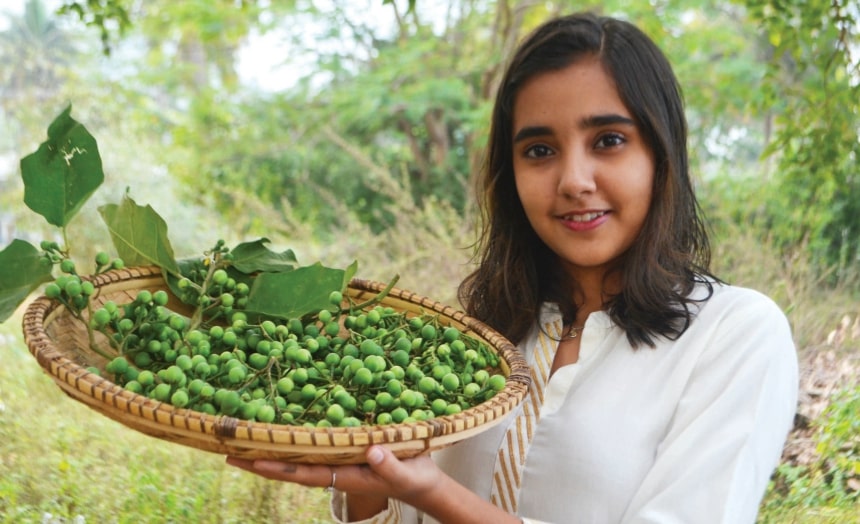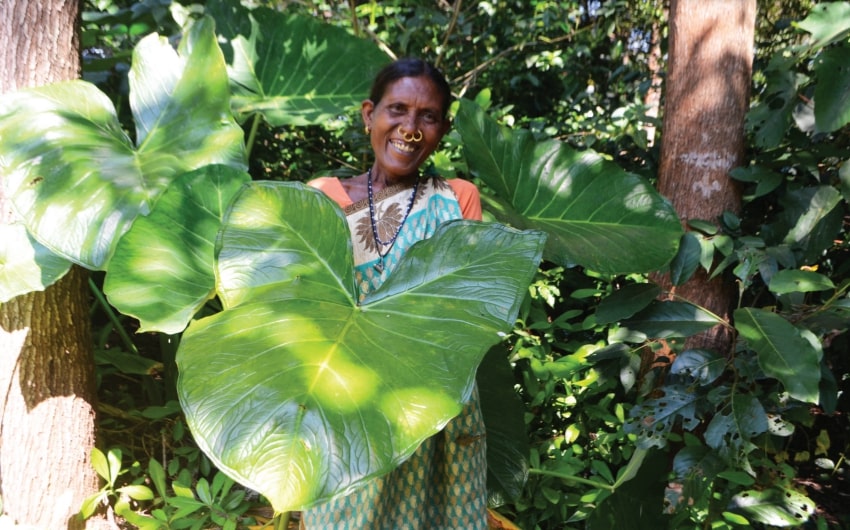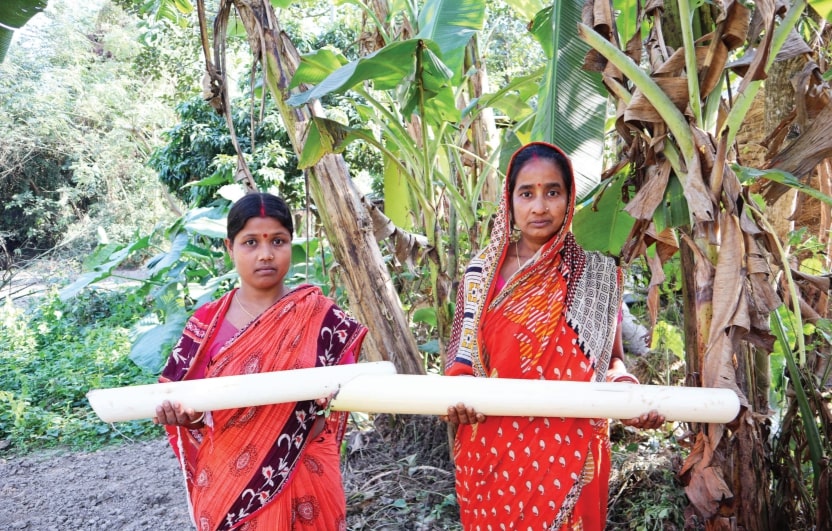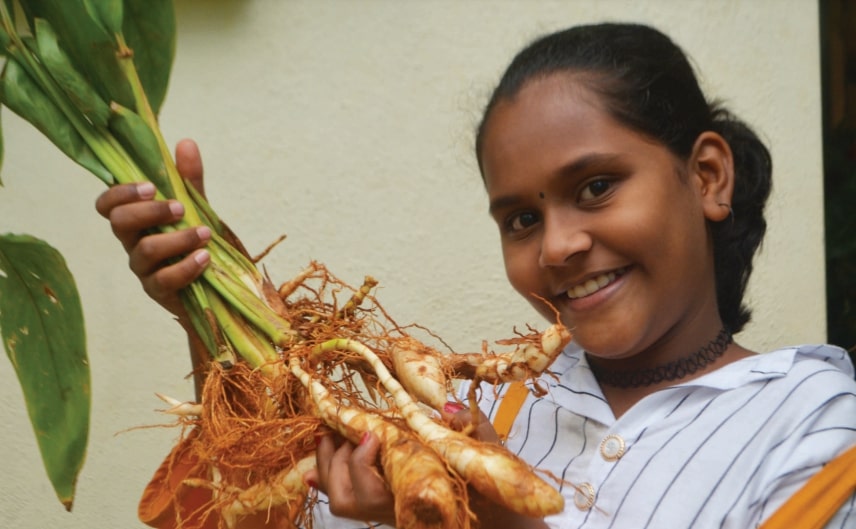There is perhaps no desi superfood that Chennai-based Meenakshi Bhoopathi has not consumed. At a time when the world is seeing an increasing number of people eagerly going back to forgotten traditional immunity-boosting foods, Meenakshi is an interesting case study.
Her parents’ home garden has over 20 different kinds of superfoods that she used to eat while growing up. From leaves to stems, roots, flowers and seeds, every part of the plant was used to make delectable and nutritious meals in her house. Her friends and colleagues were often unable to contain their curiosity every time she opened her tiffin box and they caught a whiff of the distinct aroma of veggies and herbs that are otherwise to find in the market.
Meenakshi attributes this immense knowledge of the health benefits of every kind of superfood in part to ancestral wisdom, and in part to experiential learning.
“With an aim to preserve this knowledge and share it with others, I started a page on Facebook called ‘Forgotten Foods’ after my sister Monisha suggested it. Here I began posting about the properties, benefits and recipes of superfoods that we have been using for generations,” Meenakshi, a software professional, tells The Better India.
Taking a gigantic step forward in her endeavour, Meenakshi recently collaborated with Sahaja Samrudha NGO to make a calendar on superfoods. It was published in Kannada and English, and later in Hindi and English.
“Sahaja Samrudha is a people’s organisation comprising a network of farmers that share practices and exchange knowledge about sustainable agriculture. The NGO works towards preserving indeginous crop varieties, and every year, they publish a calendar providing information on the same. For 2021, founder G Krishna Prasad asked me to write content on superfoods. Thanks to Sahaja, we got funding from NABARD to publish 1,000 copies,” Meenakshi says.
The calendar is divided into five segments (two months per segment) — edible flowers, fruits and seeds, roots, stems and leaves. There are a total of 25 lesser-known ingredients divided into the mentioned categories.
The calendar also mentions traditional recipes that are an integral part of local cuisine in the region where the superfood is grown or available.
The cover page has January and February. It has an image of a tribal woman with rosselle flowers, which are used to make chutney and pastes in parts of Odisha and Andhra Pradesh. Likewise, the photos for every section are of local people who consume the superfoods on a daily basis to send out a message that it is not challenging to find such food.
Leaves to Flowers: How Many Do You Know?
Edible Flowers

Meenakshi has mentioned five edible flowers — Avarampoo (Senna), Pumpkin, Agati, Butterfly Pea and Moringa.
While yellow-coloured pumpkin flower is a rich source of vitamin B9 and A, Avarampoo stimulates bowel movements. The flowers can be consumed as fritters.
“Agati flower or Sesbania grandiflora is alkaline in nature and helpful to cure toxicity and skin diseases. It is also coolant in nature and many dishes like pickle, curry, fritters can be made out of this,” reads a paragraph in the calendar written by Meenakshi.
Moringa flowers can be used in curries. The flower is packed with vitamins, proteins, iron, zinc and fiber that helps in controlling blood sugar levels, boosting immunity and heart and bone health.
Finally, there is butterfly pea, the petals of which can be dried and used to make caffeine-free tea. The flower has antioxidant properties. Besides tea, the flower is also used to make blue rice.
Meenakshi shares her home recipe for banana flower:
Ingredients
- Bengal Gram or Chana Dal 150g
- Banana flower ( half flower cleaned well by removing the
- unwanted stigma)
- Onion (half finely chopped )
- Pudina (half handful chopped)
- Coriander (half handful chopped)
- Ginger (1 inch approx finely chopped)
- Green Chilli (2 to 3 finely chopped)
- Curry Leaves (few) | Fennel Seeds (one spoon)
- Oil for Frying | Salt (as per taste)
Procedure
- Soak 150g Bengal Gram or Chana dal for 2 to 3 hours in water after washing it well.
- Drain the water well and grind the dal into a coarse paste. (These coarse particles add crispness to the vada)
- Add remaining ingredients to the ground dal and mix well with salt as per taste.
- Take a deep kadai and add oil to get heated to medium flame.
- Make small round balls of the mix and press it to flatten the vada. Flip it in the hot oil and fry both the sides till the vada turns golden in colour and is well cooked.
Fruits and Seeds

Pumpkin seeds are beneficial for controlling cholesterol and hair loss. High in essential fatty acids and magnesium, the seeds can be sun-dried and stored to be eaten as a nut.
Under fruits, Meenakshi mentions Black Nightshade (vathal in Tamil), a shrub that contains vitamin B complex and helps in curing ulcers. It also acts as a healer for cramps and stomach pain.
Other fruits include Glue Berry (Lasura), Passion Fruit, Turkey Berry and Mulberry.
“Glue Berry fruits are pickled and also used as vegetable fodder. The leaves yield good fodder and the seed kernel has medicinal properties,” writes Meenakshi.
“Mulberry trees carry colorful berries — most commonly black, white, or red — that are often made into wine, fruit juice, tea, jam, or canned foods, but can also be dried and eaten as a snack,” she adds.
Leaves

Colocasia, arbi leaves, or Taro leaves are an excellent source of fiber and resistant starch that improves cardiovascular health, increases protein in the body, and is good for the eyes. The elephant-shaped ears are commonly used in recipes across India from Gujarat to Karnataka. In fact the two states have a similar process to make ‘patra’ or ‘pathrode’.
A powerhouse of essential nutrients, water spinach contains, iron, Vitamin A and C and other minerals. Also called Kangkong or Chinese spinach, it can be used in salads, stew and soup.
Dwarf copper leaves (alternanthera Sessilis) are aquatic creepers that are good for the eye, while wild spinach (White goosefoot) is low in calories and fats and rich in vitamin, iron, calcium and potassium. The chickweed purslane or poi saga in Oriya is good for immunity and in preventing skin diseases.
Stems

Stems are arguably the most underrated part of a plant and are often discarded. But Meenakshi gives examples of various stems that can be used to make different food dishes like salads, juice, curries, soups, stew and sambhar.
Beetroot, lotus and banana stems are rich sources of fiber, potassium, vitamins, zinc, copper and iron.
Did you know that water chestnuts, commonly called ‘Singhara’, are aquatic tuber vegetables that are often used to make rotis? They are low in calories and high in antioxidant compounds.
Anshuman Das from West Bengal, who is also a follower of Meenakshi’s Facebook page, shares his recipe for banana stem rice, locally known as Thor Chal.
Ingredients
- Basmati Rice or Any Traditional Fragrant Rice- 1 cup soaked for 15 min
- Banana Stem – 250 g well cleaned and grated
- Green and Red Chilli few as per spice requirement
- Ghee 2 Tbsp | Cinnamon – 1 | Bay leaves – 2
- Raisins and Cashews – As required
- Chopped Coriander for garnish | Salt – As per taste
Procedure
- Grate the Banana Stem and keep it aside.
- Fry the cashews and raisins in ghee and keep aside.
- Take a wok and add 1 spoon of ghee to it, followed by green and red chilli, bay leaves, cinnamon and grated banana stem.
- Add the well soaked rice of your choice into the masala and add desired salt to the mixture and mix it well.
- Add necessary water to cook the rice of your choice to pulao consistency by closing with a lid for 15 to 20 minutes.
- Once the rice is cooked, slowly puff it up, stir around slowly, and add the ghee fried raisins and cashews over it.
Roots

“As cornstarch is high in carbs and less in nutrients, it can be easily replaced with nutrient rich arrowroot powder as a thickening base. Arrowroot tubes which grow below ground are nutrient rich and a safe gluten free option for starch. Most of us confuse Arrowroot with Tapioca, but they are completely different plants and used to maintain gut health,” writes Meenakshi.
In this final section, she has given examples of roots and tubers that are easy to grow at home. For example, the aerial potato (Dioscorea bulbifera), which requires no space to grow, can twine around shrubs and trees. The plant is packed with carbohydrates, proteins and calcium. It is an ideal diet for the diabetic patients.
Chinese potato or Koorka in Malayalam, Sirukilangu in Tamil and Sambrali in Kannada is effective to cure digestive issues. Meanwhile purple yams are loaded with vitamins, minerals and antioxidants.
S R Syam Kumar from Kerala shares the recipe for Arrowroot halwa (Known as Koova halwa in Kerala)
Ingredients
- ArrowRoot Powder 1⁄2 cup
- Jaggery Powder 1⁄3 cup
- Cardamom Powder one pinch
- Ghee 4 spoon
- Cashews few – fried in Ghee
- Water 1 cup
Procedure
- Dissolve the Jaggery in a cup by heating it to medium flame.
- In kadai, put one cup of water and add the arrow root powder.
- Add the liquid jaggery in the kadai slowly and keep stirring till no lumps are formed.
- Add Ghee and mix it well
- Grease a plate and slip the mixture onto it and flatten it. Sprinkle the Cashews and roasted dried coconut over for garnish and cut them in square or diamond shape.
- Koova Halwa is ready to eat
Click here to see the calendar
Edited by Divya Sethu
No comments:
Post a Comment